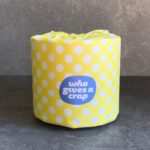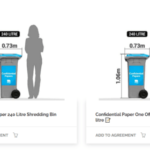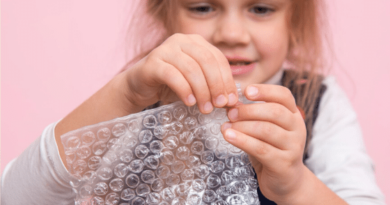Bidets vs Toilet Paper 🚽: Which One is More Eco-Friendly?
Energy Disrupter
Bidets vs Toilet Paper 🚽: Using water to wash is definitely more sanitary than simply using toilet paper, but are bidets eco-friendly? Let’s find out!
The average American household uses more than 400 rolls of toilet paper every year. Not only does this create heaps of paper waste, but manufacturing it requires a great amount of trees and water as well. That’s where the alternative of a bidet comes in.
Actually, spraying water to clean up after using the bathroom is an age-old practice. It is a popular method of personal hygiene in Asia, Europe, and a few other places around the world. However, Americans are dubious when it comes to using a bidet, probably because of their time-honored habit with toilet paper.
Now, the questions come down to these: Is it really worth switching from toilet paper? Are bidets actually more eco-friendly? To answer these, we’ve broken down the facts one by one to look at the complete lifecycle for both bidets and toilet paper. Let’s dive in!
>Download Now: Free PDF Business Owners Guide To Commingled Recycling Bin Services
All Those Trees
Combined, Americans use around 36.5 billion rolls of toilet paper every year. This means about 15 million trees are cut down for toilet paper alone. In fact, over a single person’s lifetime, their toilet paper usage requires about 384 trees!
On the other hand, bidets don’t use trees. If you do not use any toilet paper with your bidet, you will prevent hundreds of trees from being cut down in your lifetime. Some luxury bidet toilet seats even have a built-in drying feature that fully eliminates the need for toilet paper.
Moreover, the spray of water cleans you thoroughly, and you can pat dry with just a few squares of toilet paper. So, even decreasing your usage to 1-2 sheets of paper to dry yourself off will greatly reduce your toilet paper consumption. Using recycled toilet paper is also a great option.
If you want to be even more environmentally friendly, you can opt for cloth to dry off instead. It is a small towel that can be used again and again just as the towel you use after showering. Since the bidet has done the cleaning, the cloth shouldn’t get too dirty. This completely eliminates any dependency on toilet paper.
Bidets vs Toilet Paper: The Water Dilemma
You may think that using a bidet means you’ll use a lot more water. But, you might be surprised to know that the amount water bidets use is less than what is required for the production of even recycled toilet paper.
Paper making is extremely water-intensive. One single roll of toilet paper requires about 37 gallons of water. With the average American using 56 rolls a year, over 2,000 gallons of water is required to meet that usage. Water is used to clean and prepare the pulp for the toilet paper. Moreover, water is wasted as it becomes polluted with the organic waste and chemicals used to bleach the paper white.
On the other hand, the average flow rate on a bidet is 0.13 gallons per minute with most people using their bidet for around 30 seconds. Even when another 30 seconds is added for the bidets’ self-cleaning function, one minute only uses 0.13 gallons per use. If the average person uses the toilet 6 times per day, that amounts to about 0.8 gallons of water per day, and under 300 gallons of water per year. This is around one seventh less water required to produce the equivalent toilet paper. Therefore with this conservative estimate, adding a bidet to your household conserves seven times the amount of water and lowers the overall environmental impact quite substantially.
Bidets vs Toilet Paper: Usage Of Electricity
To make a roll of toilet paper, the industry uses around 1.3 kWh of electricity. If you use 56 rolls of toilet paper in a year, that is approximately 70 kWh per year – and that’s just the manufacturing stage. More energy is used transporting and packaging all that toilet paper before it makes it to the store.
Bidets come in both electric and non-electric versions. The non-electric versions do not require any power supply. However, luxurious versions use around 200 kWh of electricity per year to power the hot water supply, air dryer, and heated seat. Obviously this value differs depending on the different settings but 211 kWh will only cost around $17 annually.
However, electric bidets have features like eco-mode and tankless heating method to reduce electricity. Eco-mode perceives when the bidet is not used as often, such as at nighttime, and turns off some features to save electricity. In the tankless heating method, water is only heated when you need it, instead of constantly heating the reservoir.
Facts About Disposal
When you flush the toilet, everything goes into the sewage system and gets carried into a sewer treatment plant. Toilet paper breaks down quite rapidly in water, and by the time it reaches the sewage plant, the toilet paper is fully disintegrated and won’t block any pipes.
In the plant, the watery sludge is cleaned and treated so that the water can be used as reclaimed water, or returned to the environment. The solid waste, including the disintegrated toilet paper, is either sent to landfill (most common), sold as biosolids, or incinerated. While none of these options are great for the environment, the waste needs to be dealt with somehow.
The more toilet paper you flush, the more solid waste is created to be disposed of. If the amount we flush can be reduced, it greatly helps minimize the solid waste – and using a bidet is an easy way to do this. Using a bidet decreases the stress on sewer treatment plants. The only thing that is flushed with a bidet is more water, and this water can easily be recycled and reused.
One drawback of using bidets is that once they reach the end of their life, they are not biodegradable. Recycling may be an option based on the bidet you have, but there is more chance that the bidet will end up in a landfill. Always try to fix the bidet prior to throwing it away if it malfunctions. Purchasing a replacement part is a much better option than a whole new unit.
The Shipping Issue
More than 90% of toilet paper bought in the United States is made in America, which is great as this means the emissions and energy for shipping are minimized. On the other hand, most bidets are made in South Korea or China so shipping over to the USA induces a heavy carbon footprint tax. But, they are a long-time investment. Once you buy a bidet, you won’t need another one for many years. Also, a bidet doesn’t involve regular packaging waste or constant carbon-emitting transportation like toilet paper does.
Therefore, there may be a heavy initial impact in buying a bidet, but this becomes less significant the longer you keep it. Also, you can always buy an American-made bidet if you want to cut down the carbon footprint.
Recycled Toilet Paper
Recycled toilet paper is a much better option for the environment than standard toilet paper. It requires half as much water and energy as usual toilet paper and releases only one-third of the greenhouse gases.
Unfortunately, only 2% of the toilet paper we use is made from 100% recycled content. The reason why recycled paper isn’t more popular is because it is not as soft as traditional tissue products. The deluxe toilet paper Americans have become accustomed to can only be made from virgin pulp, and most Americans are reluctant to give up that softness.
[embedded content]
If you are not concerned about the softness of your toilet paper, recycled paper is a great eco-friendly option. But if you are, a bidet is the best. Like the high-quality soft toilet paper, you won’t need to worry about any kind of irritation with a bidet as well. Switching from toilet paper to a bidet does take a little getting used to, but the experience is actually refreshing.
Bidets vs Toilet Paper: The Bottom Line
Marking something as eco-friendly is never that simple. Bidets help to replace toilet paper which is a lot less sustainable. A bidet isn’t causing the ongoing deforestation, and doesn’t require the polluting, bleaching, and energy-intensive manufacturing processes that go into the typical toilet paper. All these make the bidet eco-friendly and the better option for your wallet. Therefore, if you are considering greening up your toilet routine, investing in a bidet is an amazing solution that will not only save on trees but landfill and water use as well.

















